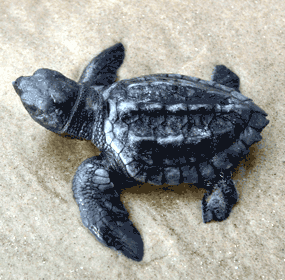EDFish
Magistrate Judge Finds Gulf of Mexico Grouper and Tilefish IFQ Legal
New England Catch Share Fishermen Serving Up Fresh, Traceable Fish Directly to Restaurants
A group of fishermen in Rhode Island who helped establish the groundfish and fluke catch share fishery management programs are now able to go back to the days when fishermen sold their fish directly to restaurants versus solely through wholesalers. Selling directly increases the prices fishermen can get for their catch and also means customers are eating the freshest fish.
Chef John Vestal from New Rivers in Providence, Rhode Island who is a customer of the new fishermen’s distribution company Wild Rhody told The New York Times, “I have been buying all the seafood for the restaurant for over a decade, and what I saw amazed me. The fish was the absolutely most beautiful, fresh, cleanest seafood I had ever seen.”
In a recent article in The Providence Journal, fisherman Chris Brown described why it was difficult to sell directly under the old fishing derby system before the switch to catch shares: “’Used to be, years ago, they would say, ‘the season is open, go,’ Brown said. ‘There was a race to fish. We wouldn’t have been able to do something like this. Now we can fish to the prompts of the market.’” Read More
Judge Dismisses Attempt to Halt West Coast Fishery
Earlier this year, EDF joined with two West Coast fishing industry organizations (United Catcher Boats and Midwater Trawlers Cooperative) in an amicus brief requesting dismissal of a lawsuit brought by the Pacific Coast Federation of Fishermen’s Associations (PCFFA). PCFFA had filed suit to halt the West Coast groundfish trawl program.
Late last week, U.S. District Judge Charles R. Breyer ruled in the case, dismissed PCFFA’s claims in their entirety and granted summary judgment to the federal defendants (the Secretary of Commerce, NMFS and NOAA). This is an excellent outcome for a program with real potential to transform a failed fishery into a profitable and sustainable one for years to come.
Please see the news release on the ruling below and download the court’s decision on the West Coast Trawlers’ Network website. Read More
EDF Agrees with 8 New England Senators, We Should Focus on Refinements to Enhance the Groundfish Sector Management Program
This week senators from Maine, New Hampshire, Massachusetts and Rhode Island sent a letter to Eric Schwaab, National Oceanic and Atmospheric Administration (NOAA) Assistant Administrator for Fisheries, proposing several refinements to enhance the New England groundfish sector management program. EDF agrees that we need to be adaptive and sectors – as with all fisheries management tools — need to be refined as experience is gathered and evaluated. With more than a year of operation under sectors now complete, results of the program’s performance show signs of progress that the fishery has started to turn the corner to a more ecologically and economically stable fishery.
EDF agrees with the senators and is very focused on improving the at-sea monitoring program so that is more reliable, comprehensive, and cost effective. At-sea monitoring costs need to be reduced and the use and electronic monitoring systems need to be approved. EDF commissioned Northern Economics Inc to conduct an independent 3rd party review of the current sector monitoring program to compare the program with similar programs on the Pacific Coast and in Alaska to make recommendations for improving the design and reducing the costs of the program. Read More
‘Finding the Ways that Work’ in California Fisheries
By Guest Blogger, Huff McGonigal, fisheries consultant to EDF and the lead on our California fisheries projects with the spiny lobster fishery.
For the last 10 years, California has been working to create one of the most extensive networks of Marine Protected Areas (MPAs) in the world. When it’s complete later this year, this network will help protect California marine ecosystem for generations to come. But while MPAs will form a cornerstone for marine management in the state, simply closing these areas to fishing will not ensure sustainable fisheries off California. Healthy fisheries, and the communities and jobs that depend on them, require that focus now be shifted to effective management of the 84% of state waters that remain outside the MPA network.
The challenge in California, as in many states, is the persistent lack of agency resources available to move fisheries management forward in a meaningful way. This is exacerbated by a progressive law in California called the Marine Life Management Act that requires that fisheries be managed under Fishery Management Plans (FMPs). While the law’s concept of holistic management is a good one, the expense of creating these plans has largely kept them from being developed and management regimes have therefore remained stuck.
In 2008 EDF was approached by leaders of the spiny lobster fishery who were seeking to better control their fishing effort in order to maintain the fishery’s sustainability and economic viability. There was concern in the fishery that every year there was increasing pressure for fishermen to use more and more traps in order to compete for lobster and for fishing grounds. Further, as fishing grounds are lost to MPAs, fishing will be squeezed into an even smaller area, making these problems more acute. However, the requirement that change be carried out through a FMP presented a major obstacle. The state’s budget problems were worse than ever and the traditional approach, where the Department of Fish and Game (DFG) develops the FMP internally, was not possible. DFG and the fishery both agreed to try a new approach where DFG retained oversight of the process but where the majority of development would be carried out by contracted, outside expertise. EDF worked hand in hand with industry, DFG, and other partners to develop a budget and a broadly supported grant proposal to the Ocean Protection Council to secure the funding necessary to make this new model a reality.
After an extensive peer review, the Ocean Protection Council funded the full request amount of $990,000. In doing so it formally opened a new avenue for new fisheries management tools and approaches in California. Not only will this allow the lobster fishery to adjust to the new MPA network, but it represents a scalable model where national and international expertise can be directly engaged in FMP development and for a third of the cost of traditional FMPs.
There is now a pathway in California for coupling and integrating the MPA network with thoughtful, strategic management of fisheries – where closed areas are complemented by well managed open areas, and vice versa. To do this successfully will establish California as a true leader in ocean governance, and in the end, this is what it will take to ensure a healthy ecosystem, sustainable fisheries, and strong fishing communities.
Kemp’s Ridley Sea Turtle Nesting Season is Here Again
Kemp’s ridley sea turtle nesting season is here again, and I’m happy to report that nest numbers are well on their way to beating last year’s number! While the Kemp’s ridleys have the lowest population of all sea turtles, they have begun a huge come back in recent years.
Until half a century ago, tens of thousands of Kemp’s ridleys would surge onto Mexico’s Gulf of Mexico beaches in a few large nesting events each year to lay their eggs. At the turn of the 20th century, turtle meat and eggs became popular delicacies, causing the turtle’s population to crash. Later, accidental catches in fishing gears kept their population down. Read more about the turtle’s history and steps taken in recent years to help the Kemps ridleys population recover.
Today, Kemp’s ridleys are rebounding due in part to protections that government, fishing industry and EDF and other conservation groups helped win. In Mexico, the numbers are up from 700 in 1985 to more than 12,000 nests in 2010. In Texas, the nests have climbed from 1 in 1978 to a high of 197 in 2009 due to extraordinary steps taken to establish a secondary nesting site at Padre Island National Seashore.
This year’s total already stands at 85 nests (in just eighteen days of recording findings) and is on track to surpass last year’s number. Check back at the end of the summer for an update! At this time, it is hard to know what impacts the BP oil disaster may have had on the population. Kemp’s ridleys don’t return to nest until after the age of seven years old, so the fate of last year’s hatchlings will remain unknown for several years.













